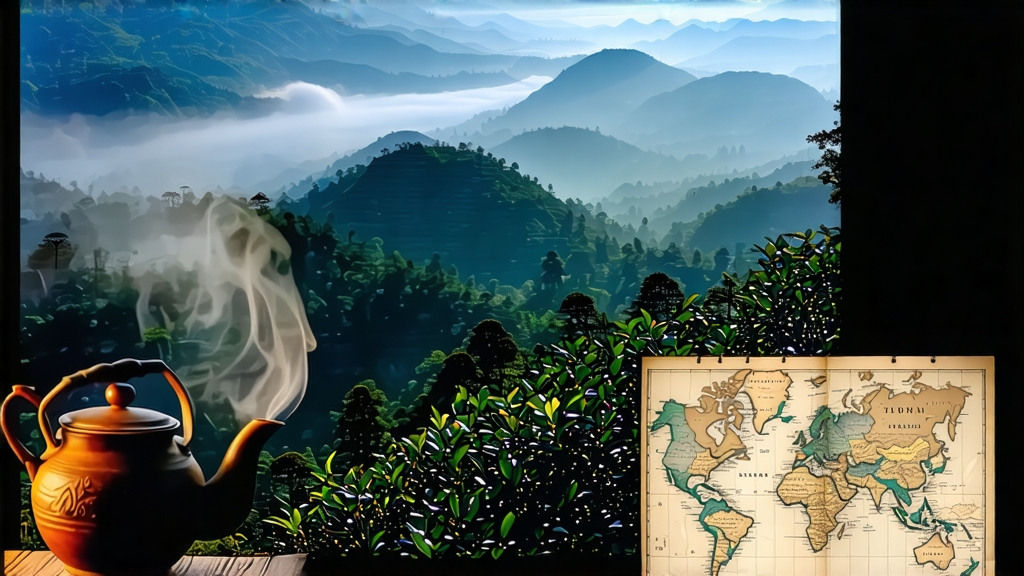
Long before Assam, Ceylon or Earl Grey entered the English lexicon, the words “bohea” and “souchong” were scribbled in the ledgers of 17th-century East India Company captains. They referred to one place—Tongmu Guan, a tiny ravine tucked into the granite cliffs of the Wuyi massif in northern Fujian—and to one tea, the original black tea of the world: Lapsang Souchong. While China now produces hundreds of fully oxidised hong cha, Lapsang remains the patriarch, the leaf that crossed oceans in wooden tea chests and taught Europe what “black” tea could taste like. Today, when sommeliers speak of terroir-driven Chinese reds, they still begin their story here, where camellia sinensis var. bohea grows under stands of Masson pine and breathes air perfumed forever with resin and wood-smoke.
History: from Ming border guards to London coffee-houses
Local lore claims the smoking technique was born accidently in 1646 when Qing troops quartered in Xingcun village demanded that tea farmers speed-dry their leaf to free up barns for barracks. The farmers, unwilling to waste the harvest, spread the leaves over pine fires and shipped them out. Whatever the truth, by 1669 the first documented cargo of “bohea” reached London, priced higher than green tea and immediately fashionable. Samuel Pepys’ diary entry of 25 September 1660—“I did send for a cup of tee (a China drink) of which I never had drank before”—almost certainly refers to this smoked Wuyi leaf. Over the next century, bohea became a synonym for all black tea; Boston’s 1773 Tea Party chests were stamped with the word. When the British later transplanted tea to India and Sri Lanka, they carried cuttings of the very Tongmu bushes whose seeds had been smuggled out in 1849 by Robert Fortune. Thus Lapsang Souchong is not merely a style; it is the genetic and cultural ancestor of every black tea on earth.
Micro-terroir: why only Tongmu tastes like Tongmu
The Wuyi Mountains rise out of the Min River’s mist like a row of broken teeth; their weathered cliffs trap humid maritime air, creating a constant swirl of fog that filters sunlight into a soft, silver glow. Day-night temperature differentials of 15 °C slow the growth of the tea bushes, thickening cell walls and concentrating aromatic oils. The soil is a coarse, mineral-rich laterite strewn with eroded granite; drainage is so sharp that roots plunge three metres in search of water, absorbing quartz and potassium that later translate into a pronounced stony sweetness. Crucially, the gorge is too narrow for large-scale agriculture; only 60 hectares of original bush land remain inside the core protected zone. Any leaf picked outside this 27° 54′ N, 117° 56′ E micro-terroir may be called “Zhengshan Xiaozhong” on the domestic market, but connoisseurs know it will lack the resinous depth that only Tongmu terroir can provide.
Varieties: smoked, unsmoked and the elusive wild arboreal
- Traditional Song Zhong (Pine-smoked): the classic. Fresh leaf is withered over local Masson pine embers, then pan-fired, rolled, oxidised 90 %, and finally dried on bamboo trays above smouldering pine logs. The smoke bonds with leaf moisture, forming guaiacol and syringol, compounds that give campfire, bacon and frankincense notes.
- Wuyi Unsmoked (Zhengshan Xiaozhong): same raw leaf, but the process stops after charcoal drying. What reaches the cup is a silky, raisin-sweet liquor with hints of longan and wet slate; it is the tea that convinced Chinese drinkers in the 2000s that black tea could be elegant without smoke.
- Wild Arboreal Souchong: picked from 3–5 metre tall tea trees that seeded themselves on cliff ledges. Farmers climb bamboo ladders to harvest one leaf and a bud, then carry the 2 kg daily yield down vertiginous paths. The leaf is naturally lower in catechins but higher in floral terpenes; when lightly smoked it tastes of pine nectar, honey and alpine herbs. Annual production is under 300 kg, most pre-sold